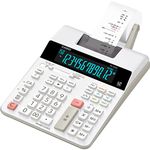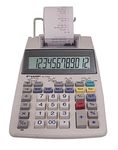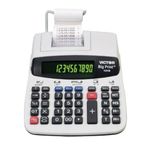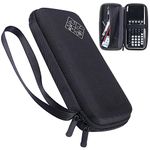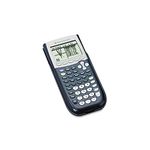10 bestPrinting Calculatorsof December 2025
112M consumers helped this year.
28% off
1
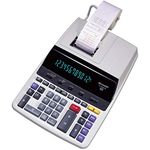
Sharp EL-2630PIII Deluxe Heavy Duty Color Printing Calculator with Clock and Calendar 8 7/8 x 12 7/8
Sharp

9.9
2
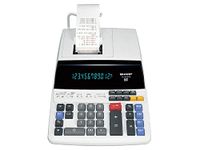
Sharp SHREL2615PIII Printing Calculator, 12-Digit, with Fluorescent Display, 8-7/10"x13"x1"
Sharp

9.8
15% off
3
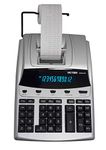
Victor 1240-3A 12 Digit Heavy Duty Commercial Printing Calculator with Built-In AntiMicrobial Protection
Victor

9.7
4
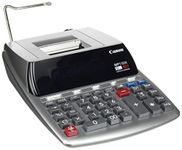
Canon MP-11DX II Printing Calculator
Canon

9.5
5

SHARP EL-2201 RII 12-Digit Electronic Printing Calculator
Sharp

9.3
OtherUp to 16% off
12% off
6

Canon CP1200DII 12-Digit Desktop Printing Calculator
Canon

9.2
7
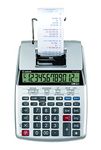
Canon P23-DHV-3 Printing Calculator
Canon

9.0
8
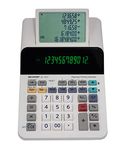
Sharp El-1501 Compact Cordless Paperless Large 12-Digit Display Desktop Printing Calculator That Utilizes Printing Calculator Logic
Sharp

8.8
9

Canon CNMMP21DX Color Printing Calculator, AC Supply Powered, 3.7" x 9" x 12.2", White, 1 Each
Canon

8.6
5% off
10
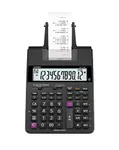
Casio HR-170RC Plus Mini-Desktop Printing Calculator
Casio

8.3
A Guide to Selecting the Best Printing Calculators
When choosing a printing calculator, it's important to think about how and where you'll use it. Printing calculators are especially useful for people who need a physical record of their calculations, such as accountants, cashiers, or anyone handling finances. Before buying, consider how often you'll use it, what kind of calculations you'll perform, and whether you need portability or advanced features. Understanding the key specifications will help you find a model that matches your needs and makes your work easier.
Print Speed
Print speed refers to how many lines per second the calculator can print. This is important because a faster print speed means you can complete your work more quickly, especially if you have to process a lot of calculations. Print speeds are usually divided into slow (around 1-2 lines per second), medium (2-4 lines per second), and fast (over 4 lines per second). If you only use the calculator occasionally or for short calculations, a slower speed may be fine. If you handle long lists of numbers or work in a busy environment, a faster print speed will save you time and frustration.
Printing Color
Printing calculators often use one or two colors, typically black and red. This feature is important because two-color printing helps you easily distinguish between positive and negative numbers or highlight errors. Single-color printing is usually enough for basic needs, but if you want clearer records or need to spot mistakes quickly, a two-color printer is a better choice.
Paper Size and Type
The paper size and type refer to the width of the paper roll the calculator uses and whether it uses standard or special paper. This matters because using a common paper size makes it easier and cheaper to find replacements. Most printing calculators use 2.25-inch or 2.5-inch rolls. If you need longer printouts or want to avoid frequent paper changes, look for a model that supports larger rolls. For most users, standard paper is sufficient, but if you need archival-quality records, check for compatibility with special paper types.
Power Source
Printing calculators can be powered by batteries, an AC adapter, or both. This is important because your work environment may not always have easy access to a power outlet. Battery-powered models are more portable and can be used anywhere, while AC-powered models are better for stationary use and don't require battery changes. If you plan to use your calculator at a desk, AC power is convenient. If you need to move around or use it in different locations, look for a model with battery options.
Display Size and Type
The display size and type refer to how many digits the screen can show and whether it's easy to read. This is important because a larger, clearer display reduces mistakes and makes it easier to check your work. Displays usually range from 8 to 12 digits. If you work with large numbers or need to see more information at once, choose a calculator with a bigger display. For basic calculations, a smaller display is usually enough.
Functionality
Functionality covers the types of calculations the calculator can perform, such as basic arithmetic, tax calculations, currency conversion, or advanced financial functions. This is important because the right features can save you time and effort. Basic models handle addition, subtraction, multiplication, and division. More advanced models offer features like cost/sell/margin calculations, tax keys, or memory functions. Think about the types of calculations you do most often and choose a model that covers those needs without unnecessary extras.
Best Reviews Guide Newsletter
Get exclusive articles, recommendations, shopping tips, and sales alerts
Sign up for our newsletter to receive weekly recommendations about seasonal and trendy products
Thank you for subscribing!
By submitting your email address you agree to our Terms and Conditions and Privacy Policy

